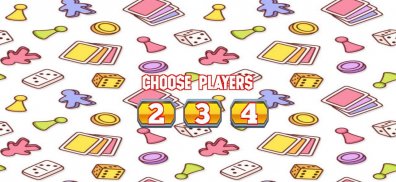







Traditional Ludo Changa Ashta

Description of Traditional Ludo Changa Ashta
Chowka Bara or Ashta Chamma or Changa Ashta is a two- or four-player board game from India.
Changa ashta is controlled by throwing four cowry shells and counting how many are 'as it is' versus those that land 'inverted': if all four shells land inverted it is called "chamma" or "Changa" and if all land as it is then it is called an "ashta". Each player takes a turn to roll the cowrie shells.
The game of Chowka Bhara / ashta changa is one of the oldest board games extant, still being played in certain parts of India. A person can make a gatti when a person has a single pawn. There are references of this game in some ancient Indian epics like the Mahabharata.
Each player takes a turn to roll the cowrie shells. The mouth of the shell landing upwards has a value of 1 and downwards has a value of 0. However, if every shell shows a value of 0, then the value of the roll is 8 and if all of them shows a value of 1, then the value of the roll is 4. Therefore, the possible values are 1, 2, 3, 4 and 8. Casting 4 or 8 gives the player an additional turn, which can continue until that player rolls a number other than 4 or 8 (namely 1, 2, or 3).
Depending on the number rolled, the player can move one (or more)[clarification needed] of their pawns that many number of squares on the board. Each player has a fixed path to move pawns, which is in an anti-clockwise direction. The path for Player 1 is given in the example diagram. Each player's piece must completely traverse the outer squares before moving into the inner squares.
Rules
1. A player casts the shells to determine the number of square his/her pawns can move. If a player has cast 1,2 or 3, then he/she needs to choose one of their pawns and move it that many squares along the path designated for that player. The player needs to be able to smartly choose a pawn to move, so that it optimizes his chance of winning the game. If a player has cast either a 4 or an 8, the player will have another turn to cast the dice. The player does not have to move any of his pawns until he has cast 1, 2, or 3.
2. "Hit": Pawns of two players cannot exist in the same square, other than a "Safe" square, which are marked with an X in the figure. For a 5x5 board this is simply the starting positions of each of the players and the center square. However, for higher dimension boards, more safe squares can be added symmetrically across the board.
3. Double vs Single: It is not possible for a single pawn to "hit" a double.
Enjoy! Changa ashta aka A var. of Traditional ludo.





















